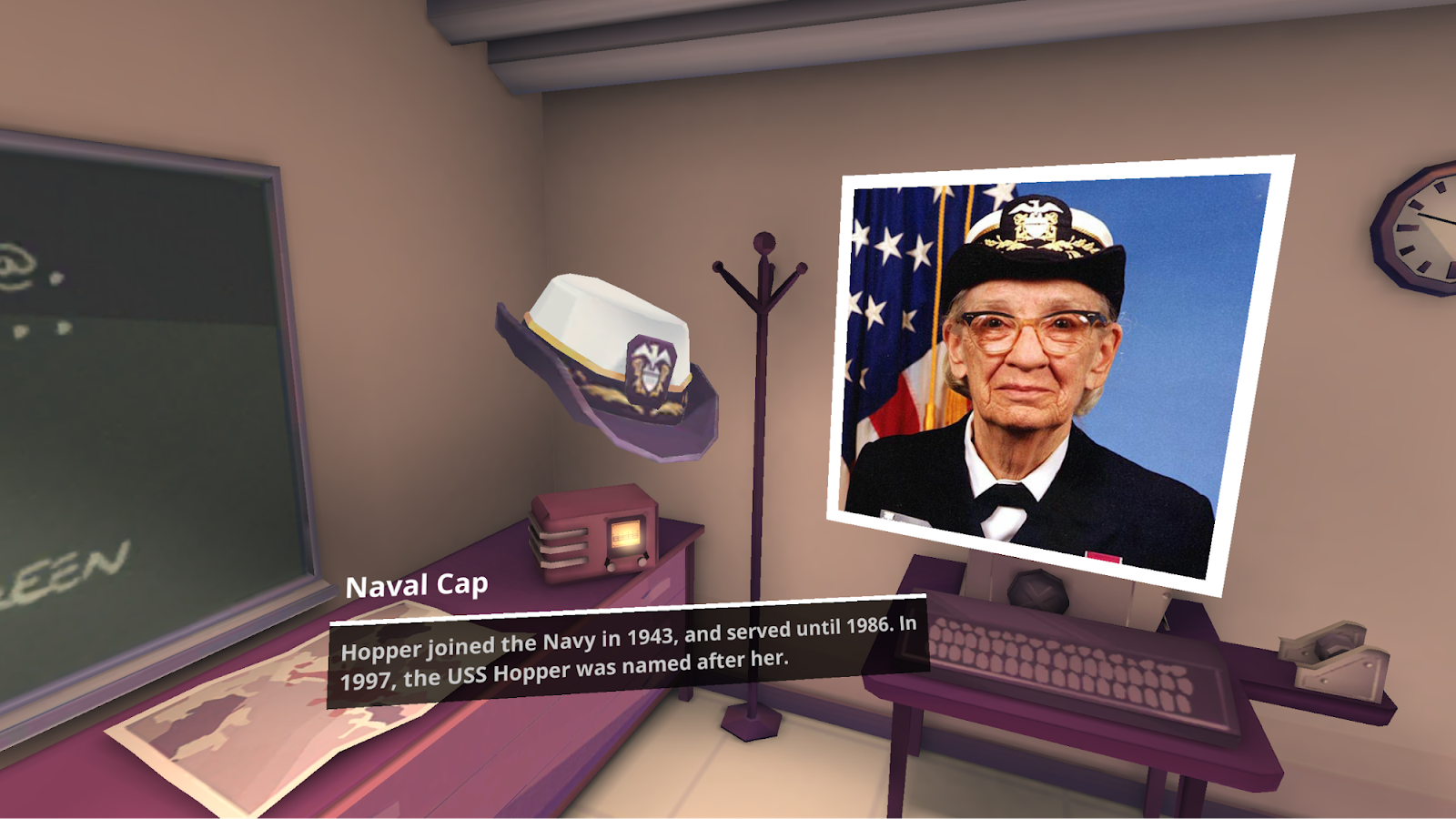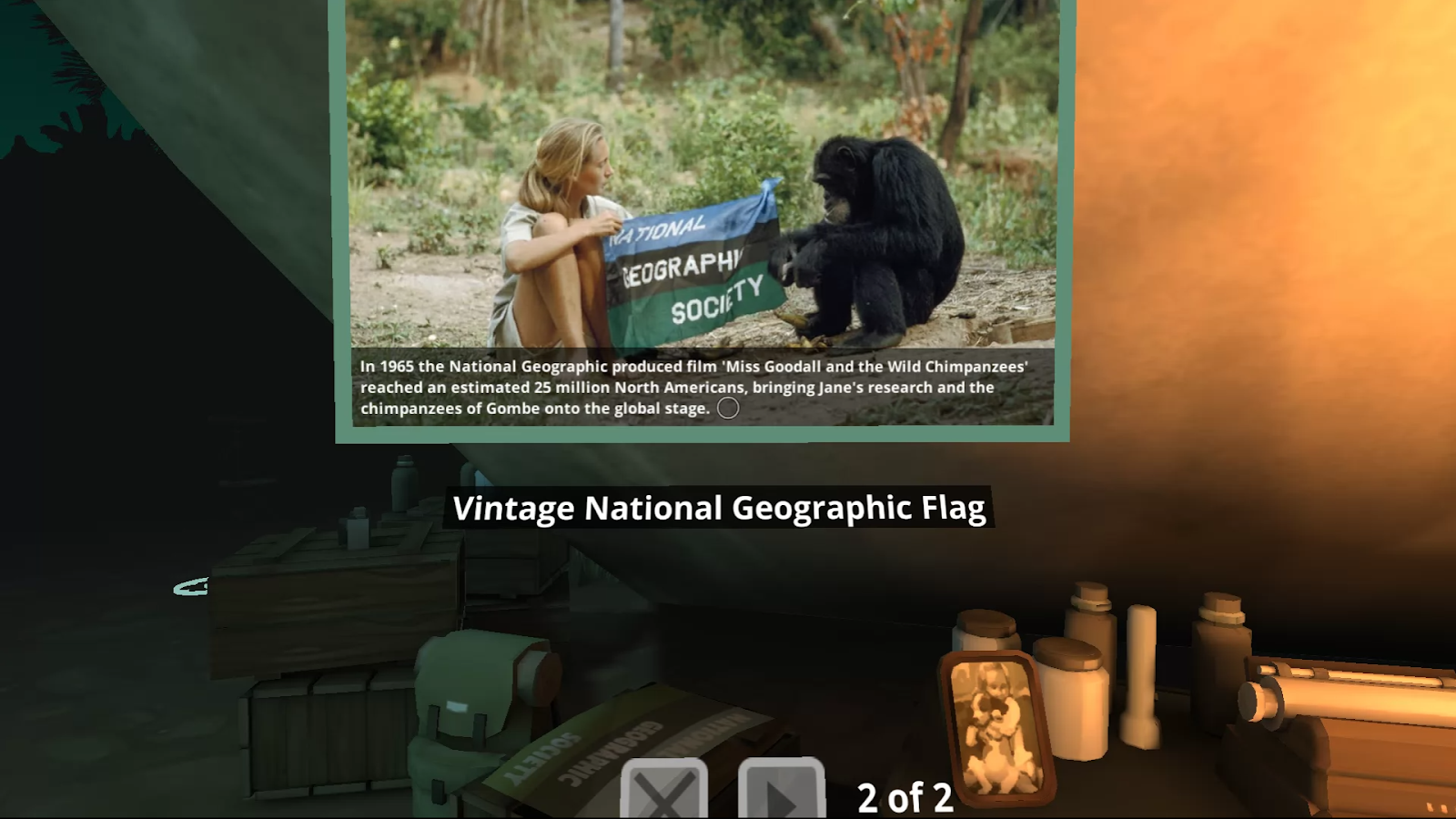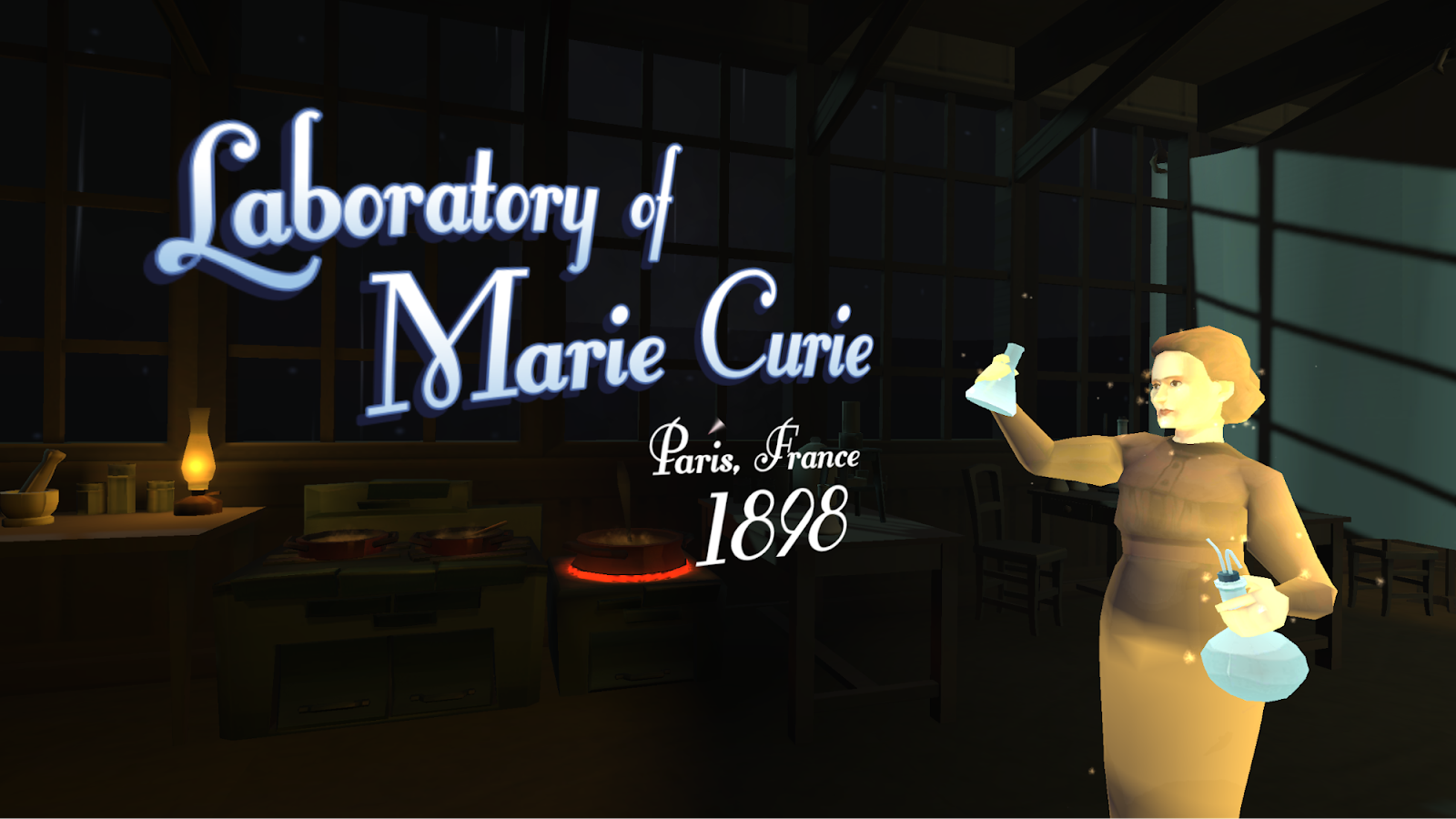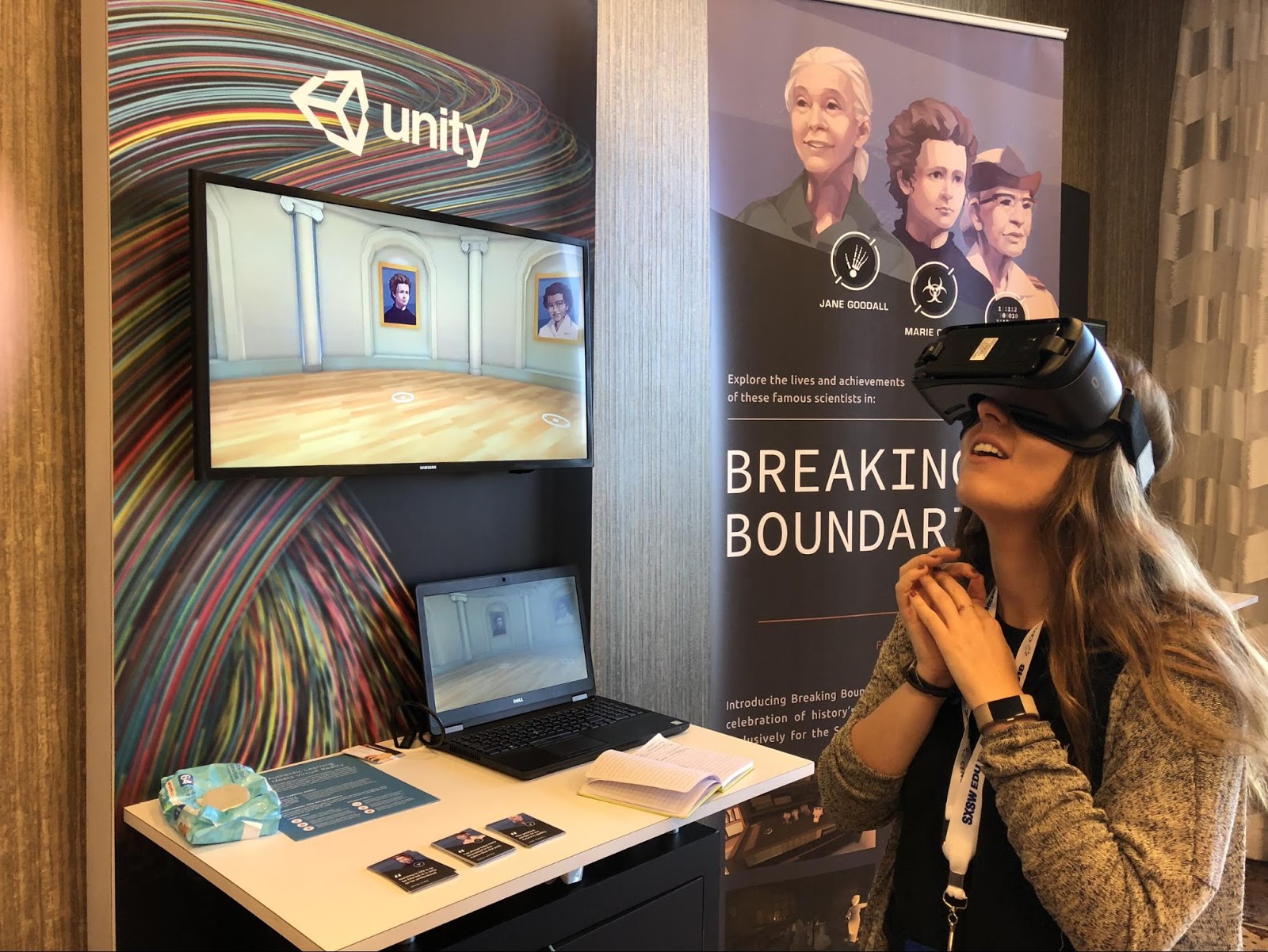To get more people interested in STEM (Science, Technology, Engineering, and Mathematics), research tells us that there needs to be more diverse STEM role models so that all people can see themselves in STEM professions. Unfortunately, there is a tendency to focus on STEM stereotypes rather than STEM role models, and STEM stereotypes are everywhere. STEM has a bad reputation for only being suited for one type of person, and we know that’s not true. But is it enough to simply raise awareness of the variety of STEM practitioners or do we need to do more to inspire people to move into the field?
We recently had a once-in-a-lifetime opportunity to collaborate with Oculus on Breaking Boundaries in Science, an interactive virtual reality celebration of history’s most influential women scientists. While there were many different ways we could have approached this project, we intentionally challenged ourselves to come up with the most inspiring ways to share the incredible lives and accomplishments of Marie Curie, Grace Hopper and Jane Goodall. After much debate and soul searching, we arrived at some fundamental principles that would guide the design of the experience:
We do ourselves a disservice by idolizing these scientists.
Idolatry creates distance. It raises people to levels that we assume that us commoners could never reach. Idolatry actually contradicts what we are trying to do, which is to encourage people to see themselves in these STEM practitioners. In Breaking Boundaries in Science, we chose to humanize these greats so that players could see that behind their great achievements are life stories that are both complex and eminently relatable. For instance, upon picking up a framed photograph on Grace Hopper’s desk, it is revealed to the player that Hopper’s father had both of his legs medically amputated when Grace was still a child. A kind businessman who lived to be 74 years old, Hopper’s father used his personal hardships to encourage his children to overcome their own obstacles – a fact that likely inspired Hopper’s own work ethic and passion for mathematics and computing. By providing nuanced, context-based details like Jane Goodall writing notes in the jungle while surrounded by mosquitoes or Marie Curie performing her Nobel-winning experiments in a shed laboratory with a leaky roof, we feel these scientist’s stories are not only made far more comprehensive, but also more accessible and relatable to today’s children and young adults.

People need to know that you don’t need a million-dollar lab to do science.
In Breaking Boundaries in Science, we invite you to explore each of these scientists’ workplaces in virtual reality. One thing you will realize very quickly is that each of these women worked in very humble spaces. Marie Curie worked in a mud shed in her backyard. Grace Hopper worked in a basement computer lab. Jane Goodall camped in a humble tent while she did her research. One of the problems I see with how we approach STEM career pathways today is that we emphasize that students should want to be an engineer, an archeologist, or a chemist – but only in the future. The implication is that they’ll be STEM practitioners at some other time in their life, when they are grown-up, and after they have two degrees under their belts. That dialogue needs to change! You actually don’t have to wait until then. Students are already probably practicing science in their kitchens, in their backyards, or down by the lake. By placing the player in these scientists’ modest workspaces, they can see that a STEM practitioner doesn’t wait to find the perfect lab to start experimenting.

People need to see that you can have a life outside of STEM.
One of the most pervasive stereotypes about STEM practitioners is that STEM is the only thing they do or think about! There is also a myth that all STEM practitioners keep to themselves and navigate life alone. From a design perspective, we made a conscious choice to counteract these myths – players get to know these women and their STEM accomplishments in a contextualized way, incorporating details from their lives to represent them as whole people. Players will see that they had families and children, and in the course of the game, the figures share tidbits of their family’s lives with you. For example, by interacting with a framed photograph of Marie Curie and her husband Pierre, players are given a brief history of their relationship – including details about their summer honeymoon bicycle tour! Players can touch, hold, and manipulate important objects and artifacts from these scientists’ professional and personal lives – creating a uniquely immersive learning experience unreplicable using any other medium.

We believe that women can inspire people of all genders.
Lastly, we needed to decide for ourselves if this was a VR experience for women and girls, or if this was an experience for everyone. We think inspiration can come from all kinds of role models, and that furthermore, the world needs more practice looking up to female role models, so we challenged ourselves to design the experience for everyone. One conscious design decision we made was to make sure that the player did not embody the actual female scientist, as being put into the body of someone of a different gender identity (or race, age, etc.) can create a disconnect. By allowing the player to be themselves in a different period of history and in a different space, we allow the experience to speak to everyone where they are.
By thinking critically about how to portray these scientists while leveraging all of the affordances of virtual reality, we were hopefully able to show the world that STEM is an incredible field that is accessible, available, and inspirational to everyone.
Breaking Boundaries in Science is out now for the Oculus Go and Samsung Gear VR – download it for free today!
